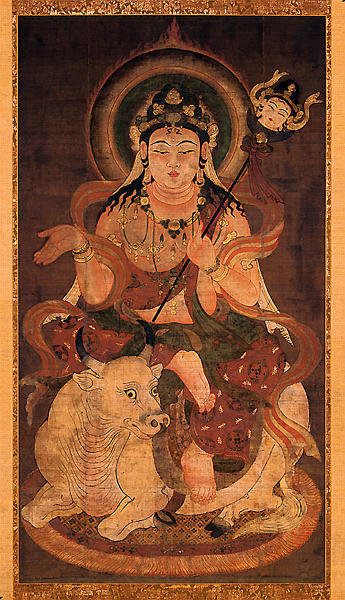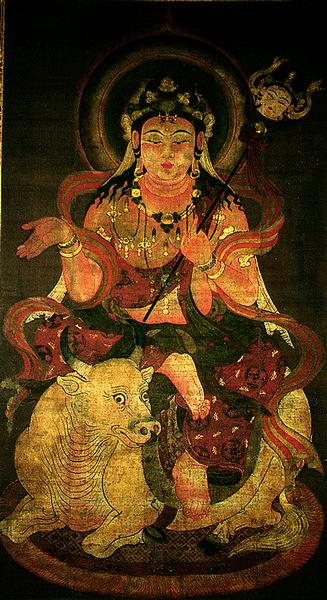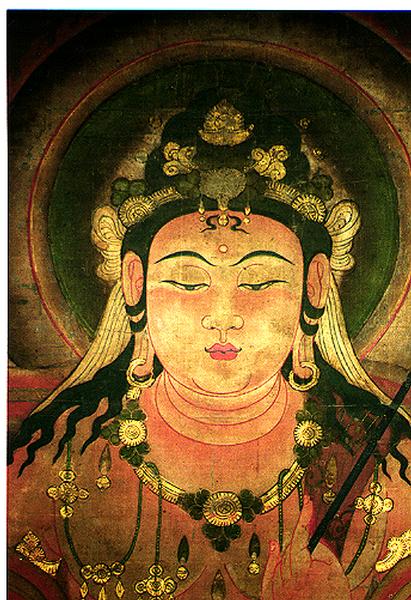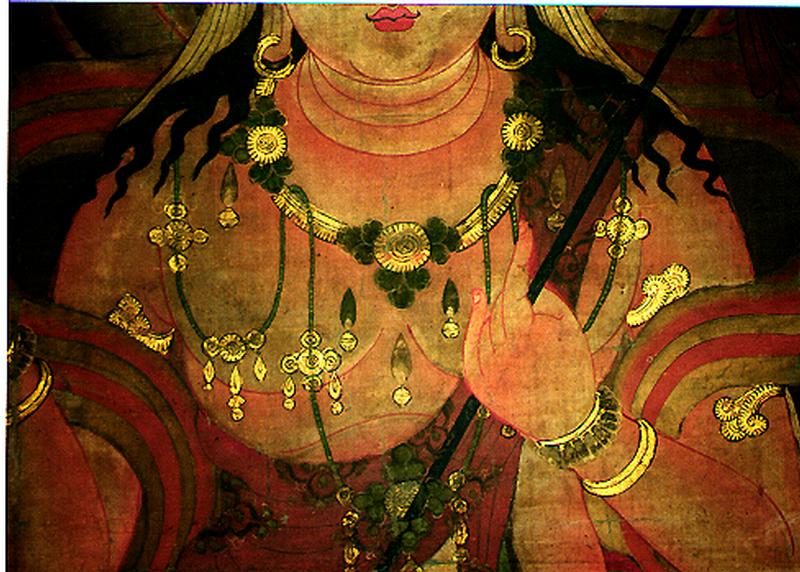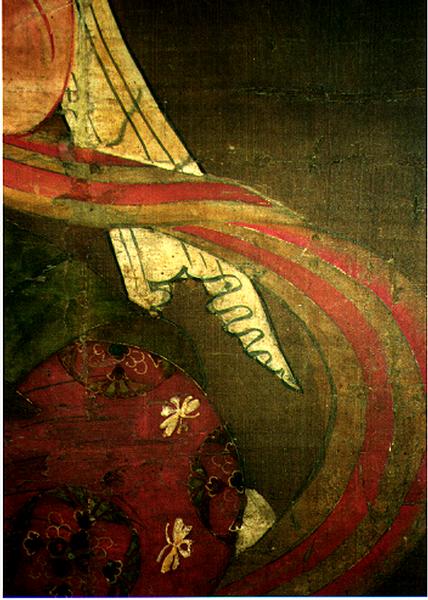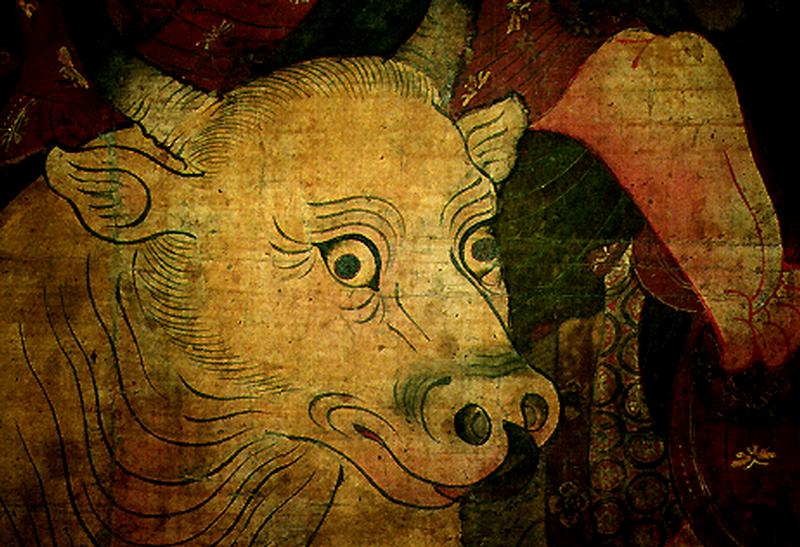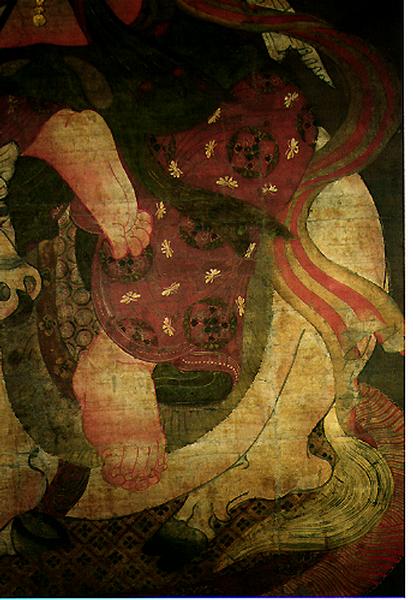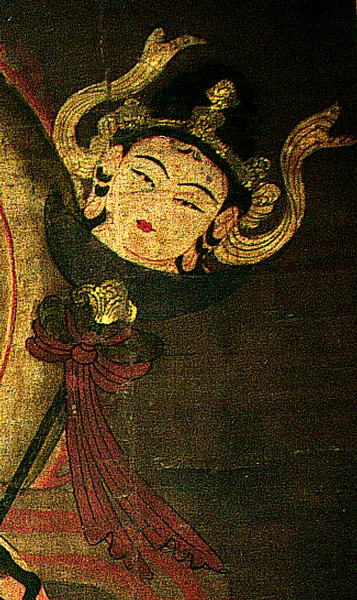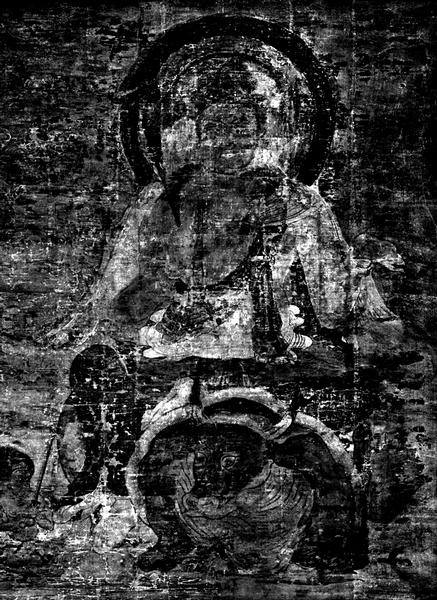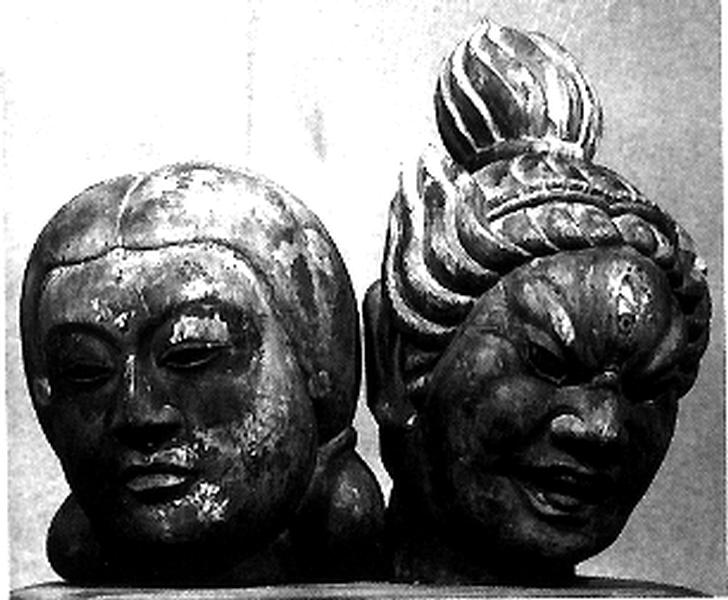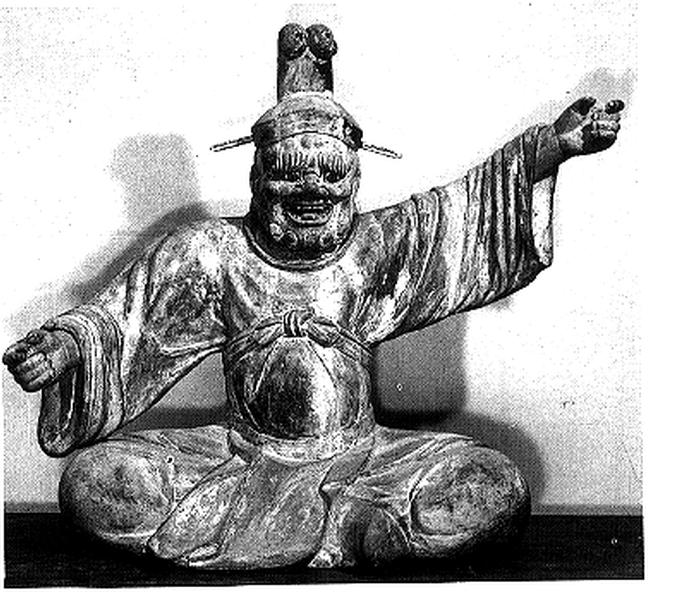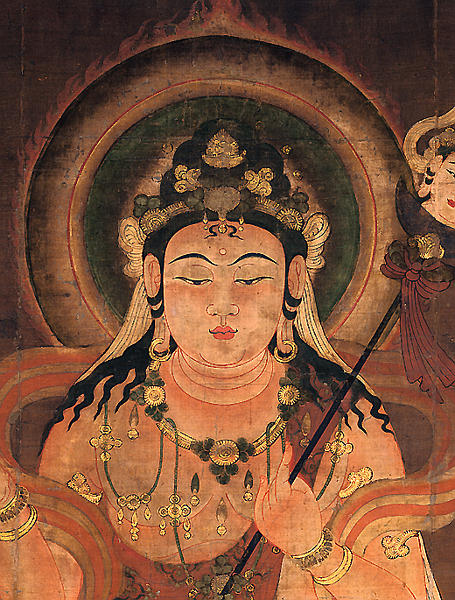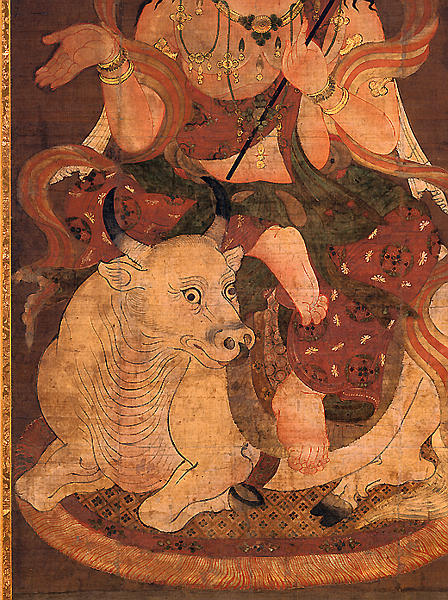Enmaten
- Japan
- Late Heian period
- 12c
- Hanging scroll, color and gold on silk
- H-155.8 W-84.5
- Important Cultural Property
Catalogue Entry
Late Heian period, 12th century
Hanging scroll, color and gold on silk
Height, 155.8cm; width, 84.5cm
Emmaten is one of the Twelve Devas and is the protector deity who guards the southern direction. When Emmaten is enshrined alone as a central figure of worship, he guards against illness and calamity and prolongs life. In the later development of the worship of the Ten Kings of Hell, Emmaten becomes Emma-o, the king of hell. This Emma-o form also appears in the Ge-kongouin section of the Taizokai Mandala (Garbhakos⇔a-mandala), one of the principal objects of worship in the Esoteric Buddhist sects. Seated on the back of a water buffalo, with left leg hanging down, right arm bent, and right palm held out towards the viewer, Emmaten holds a dandajo staff in his left hand. The dandajo is topped with a human head finial, and this head is placed within a half-moon crescent. This single symbol hints at the unsettling power of this deity. Some of the extant examples of this deity shown as a single figure have almost this same composition with the deity facing forward, and some show the deity facing to the right.
The present work is an example of the deity facing directly forward, and there is absolutely no depiction of attendant figures or background. The flesh of the deity is depicted in a whitish ground with cinnabar red shading and with the details picked out in thickly drawn cinnabar lines. The eyebrows are drawn in a double layer of black ink and ultramarine, the hairline is outlined in cinnabar lines, and the hair is colored with ultramarine. These are typical elements of Heian period Buddhist painting. The body adornments are created from cut gold leaf with black ink lines used to depict details, while the drapery motifs are constructed solely of polychrome pigments without the use of cut gold work. The johaku and mo are decorated with grouped flower motifs, and while the mo also has flying butterfly motifs, these butterfly motifs might be a later addition. The fold lines on the water buffalo's neck, the detailing of his tail, and the tasseled ornaments on the water buffalo's seat also include later brushwork. However, a section of the original hosoge motifs on the green area of the water buffalo's seat reveal the elegant intent of the original brushwork and, with the addition of the use of white lines, is particularly characteristic of Heian period Buddhist painting.
The top, bottom, right, and left edges of the picture plane have all been trimmed to some degree. The large-scale presentation of the image filling the composition can also be found in the Saidaiji Twelve Devas images of the early Heian period, and the present state of this work ably reflects the painting's original characteristics. Later brushwork can be seen here and there in the image, but the gentle decorative colors and the line work indicate that the work was created no later than the 12th century.
This work was formerly in the collections of Hara Tomitaro (Sankei) and is said to have been in the Muroji collections, but there is no proof of this provenance. TI
